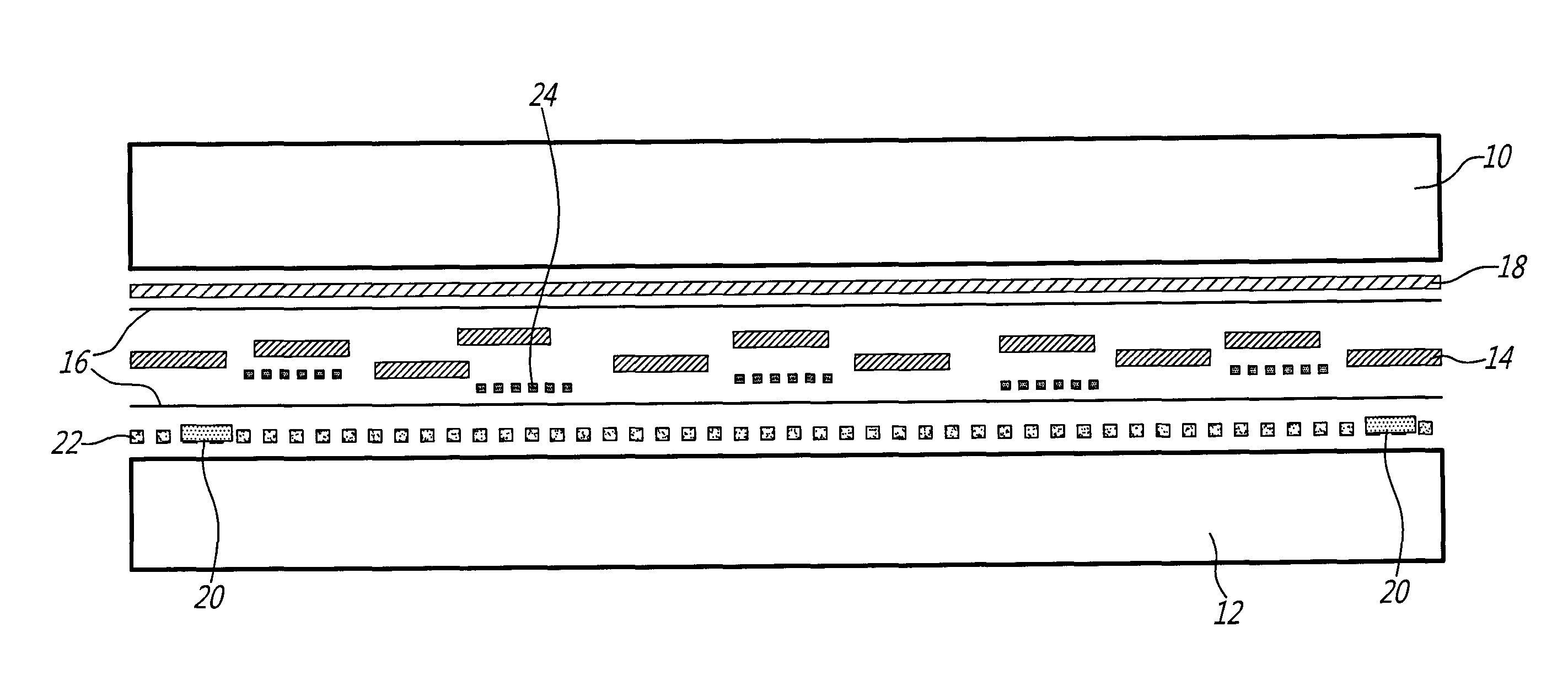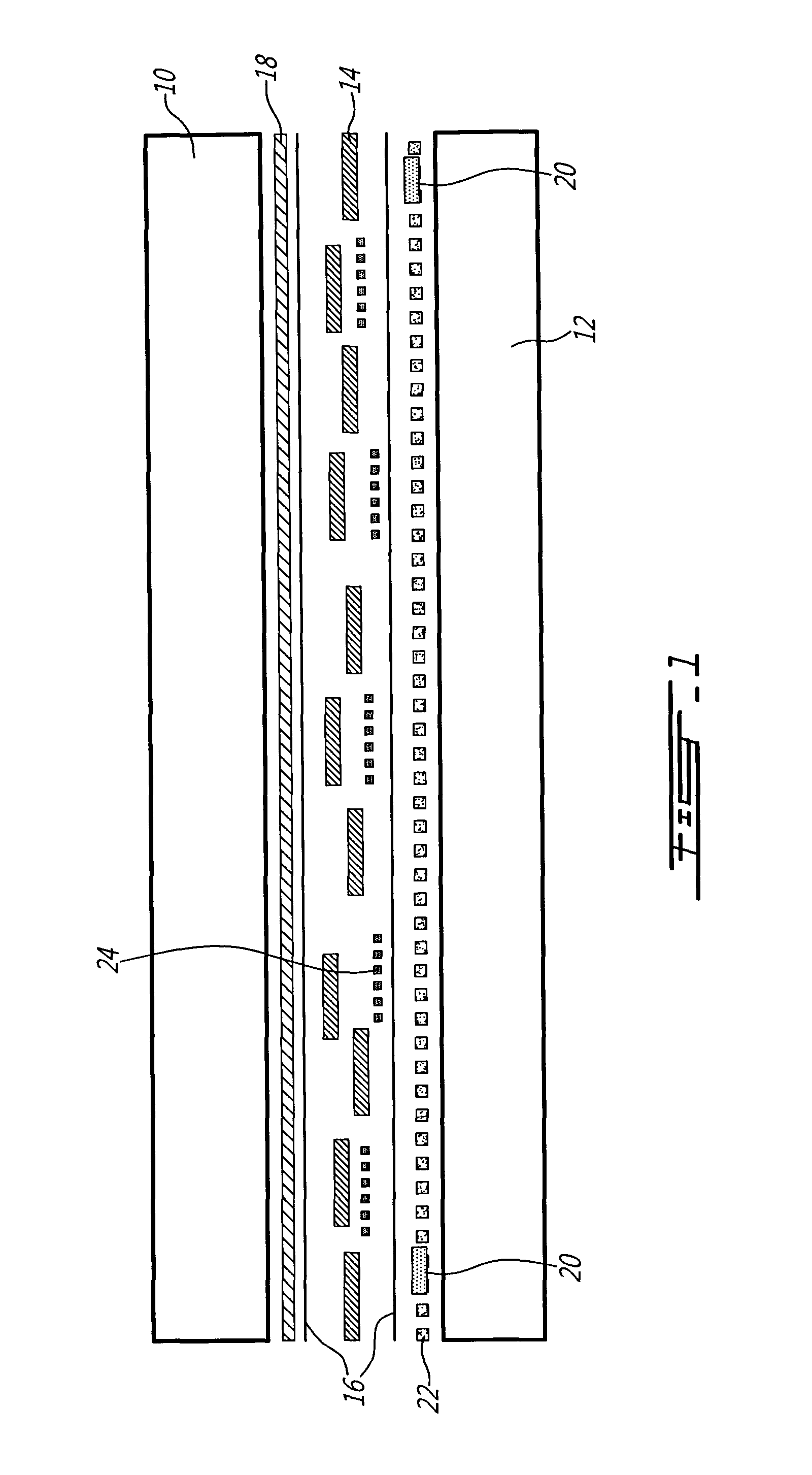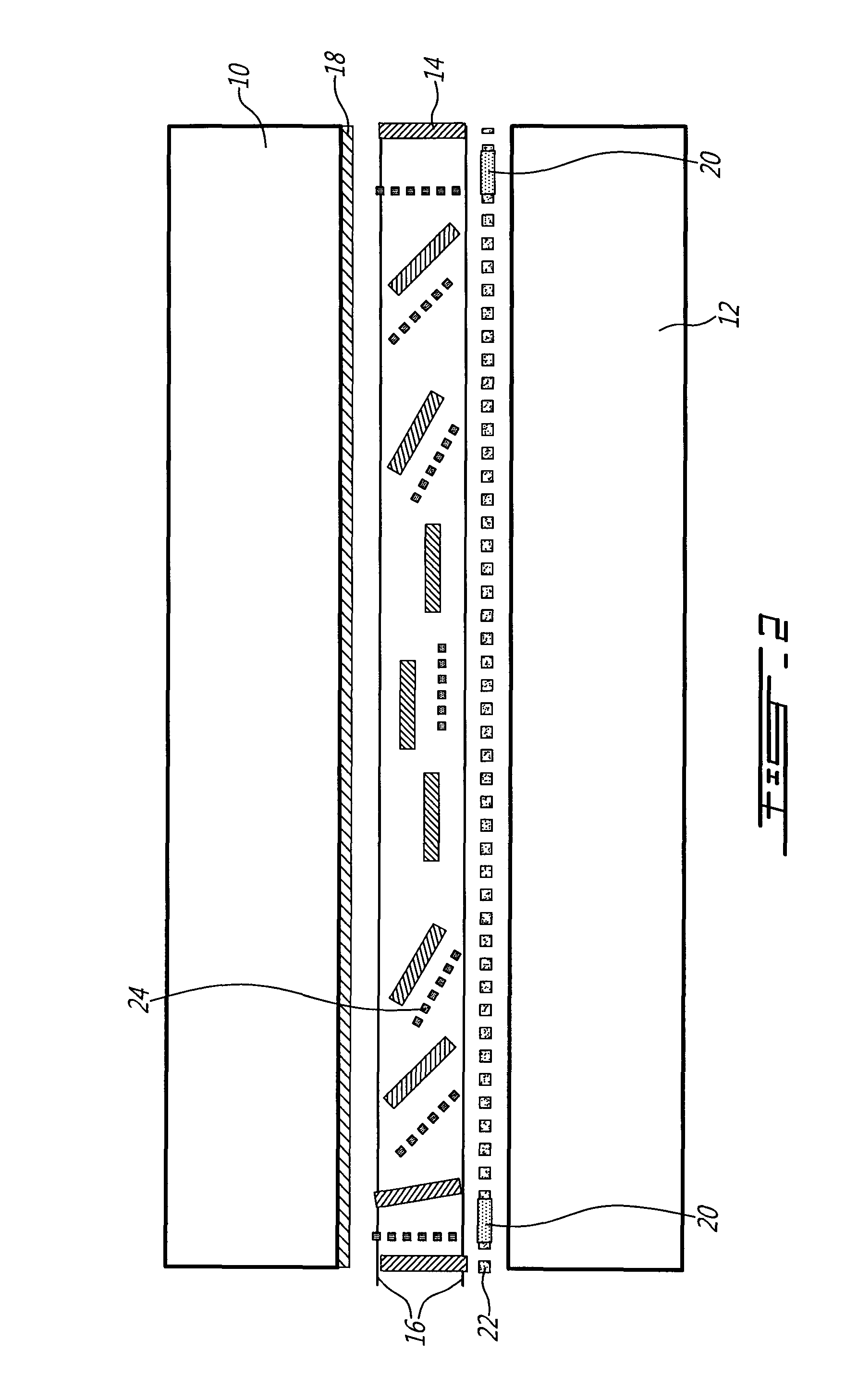Apparatus and Method for Dynamically Controlling Light Transmission
a dynamic control and light transmission technology, applied in the field of electric controllable optical devices, can solve problems such as non-uniform spatial distribution, and achieve the effect of low optical power
- Summary
- Abstract
- Description
- Claims
- Application Information
AI Technical Summary
Benefits of technology
Problems solved by technology
Method used
Image
Examples
Embodiment Construction
[0031]Shown in FIG. 1 is a tunable liquid crystal (LC) device according to the present invention. The structure has a top substrate 10 and a bottom substrate 12 in between which is located a LC layer 14. As is known in the art, alignment layers 16 to either side of the LC layer are used to provide the liquid crystals in the layer with a uniform alignment and pre-tilt, such that they all rotate in the same direction under the influence of an external electric field. In the present embodiment, an electric field is provided across the LC layer 14 using two optically transparent electrodes, a uniform electrode layer 18 positioned adjacent to top substrate 10, and a hole-patterned electrode 20 positioned adjacent to the bottom substrate 12. Also provided is a layer 22 of frequency dependent material (such as a high dielectric constant, high resistivity or weakly conductive material) that is also optically transparent, and that, in combination with the whole structure of the device (subst...
PUM
| Property | Measurement | Unit |
|---|---|---|
| angle | aaaaa | aaaaa |
| area | aaaaa | aaaaa |
| electric field | aaaaa | aaaaa |
Abstract
Description
Claims
Application Information
 Login to View More
Login to View More - R&D
- Intellectual Property
- Life Sciences
- Materials
- Tech Scout
- Unparalleled Data Quality
- Higher Quality Content
- 60% Fewer Hallucinations
Browse by: Latest US Patents, China's latest patents, Technical Efficacy Thesaurus, Application Domain, Technology Topic, Popular Technical Reports.
© 2025 PatSnap. All rights reserved.Legal|Privacy policy|Modern Slavery Act Transparency Statement|Sitemap|About US| Contact US: help@patsnap.com



